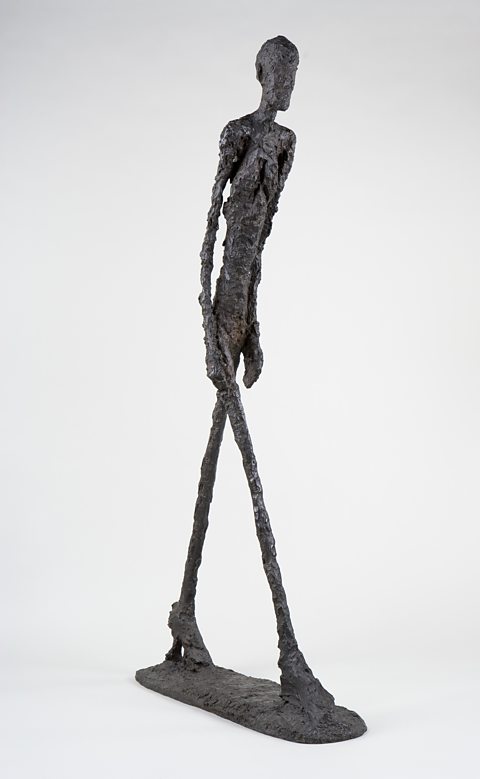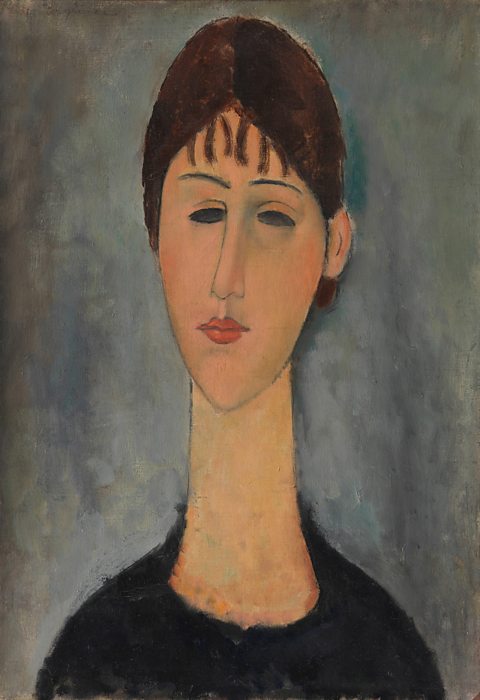Altering proportions
Not all compositions are based on realistic proportions. Some artists and designers experiment with altering proportions to create distinctive works.

Alberto GiacomettiÔÇÖs statues use stretched proportions to show tall thin figures, like in Walking Man I (1960).
Giacometti stripped away as much clay as possible from his models to try and gain a better understanding of real human forms.
The slender proportions of his sculptures draw attention to the space around them and create a sense of separation and distance between the viewer and the isolated figures portrayed.


Amadeo ModiglianiÔÇÖs portraits often show elongated proportions. Here the sitterÔÇÖs face has been stretched to a long oval and the neck appears like a long slim column.
Stretching the womanÔÇÖs head makes it similar in shape to her eyes. The high arch of the top of her head is matched by the curve of her shoulders.
The overall effect of these repeated elongated curves is to make the woman seem elegant and graceful.

Question
Why might an artist make a piece with unrealistic proportions?
It could be to exaggerate certain features, or to make the subject otherworldly, or to create a characteristic such as elegance.